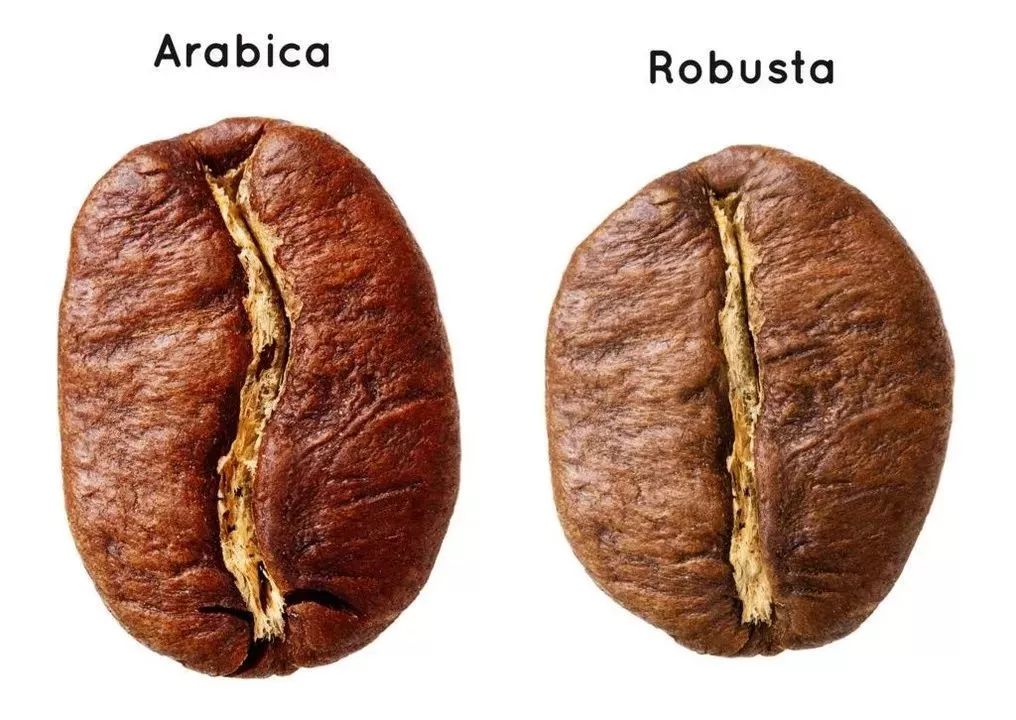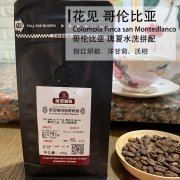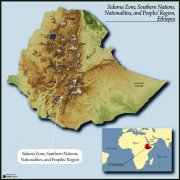How many kinds of coffee do you have? A detailed introduction to the varieties of fine coffee beans. Coffee Knowledge Basics Teaching
Introduction: with the development and changes of the times, more and more people like to drink coffee, and there are many kinds of coffee. Different coffees have different tastes. Here are some common types of coffee.
Coffee beans can be divided into two types: Arabica and Robusta.

Arabica species (Arabica): Arabica species account for 65% of the total coffee market, 80% of the coffee market, have higher requirements for the environment, need sufficient Rain Water and high altitude, and the yield is very low, disease resistance is weak, the price is expensive, its quality is good and the flavor and aroma are very rich. Caffeine content is 0.7% MI 1.4%.
Robusta species (Robusta): Robusta accounts for 20% of the coffee market, 30% of the total, strong adaptability, strong resistance to insect pests and disease, can be planted in barren plain areas, high yield, bitterness, rich taste and aroma are relatively lack. It is generally used for blending Italian coffee and making instant coffee. The caffeine content is 2% and 3%.
Arabica coffee can be divided into two main categories, one is the iron pickup and the other is bourbon, which is an ancient variant of the iron pickup, and they are not of the same level. All Arabica are derived from iron pickups. The top leaf of the iron pickup is bronzed, and the bean body is oval or thin in shape; the flavor is elegant, but the physique is weak, the disease resistance is poor, and the fruit yield is low. With the same old variety of coffee beans, unlike the tin card species, the leaves of the bourbon species are wider, the growth is denser, and the yield of coffee is higher than that of the tin card. Coffee bean particles are large in shape, uniform in size, uniform in color, and bright red when green fruits are ripe. The output of bourbon coffee is nearly 30% higher than that of tin card, but the overall yield is still low among many coffee beans and is also vulnerable to rust leaf disease.

There are many varieties derived from bourbon, among which the lineal varieties are yellow bourbon, pink bourbon, Kaddura and so on. After ripening, the fruit of yellow bourbon is not as red as ordinary coffee fruit, but yellow. It was first discovered in Brazil in 1930 and is now mainly grown in Brazil. It is generally believed that it may have been mutated by a cross between a bourbon with red fruit and a variety of iron pickup with yellow fruit called "Amerelo de Botocatu" (discovered in Sao Paulo in 1871). Because of its low yield and relatively intolerant to wind and rain, it has not been widely planted. However, when planted in high altitude areas, it will have excellent flavor performance, which is more common in recent years. Pink bourbon coffee fruit appears pink when it is ripe. It is a very rare new variety, which is bred by the cross between red bourbon and yellow bourbon. The reason why pink bourbon is a rare variety, mainly because it is difficult to maintain this beautiful pink, sometimes harvest some orange bourbon, that is because the color of coffee fruit is ultimately determined by recessive genes in pollen grains.
Kaddura, a single gene variant of bourbon, was found in Brazil in 1937. It has better production capacity and disease resistance than bourbon, and the tree is shorter and easier to harvest. Unfortunately, like bourbon, it has the periodic problem of production capacity fluctuation every two years. However, its flavor is similar to that of bourbon beans, and what is more important is that it is highly adaptable and does not need shade trees, so it is also known as Sun Coffee, which can adapt to high-density planting, but it must be fertilized more and increase the cost, so the acceptance of coffee farmers is not high in the initial stage.
SL28 is one of the famous coffee varieties in Africa. SL28 was selected and cultivated by the former Scott Agricultural Laboratory (now the National Agricultural Laboratory). This variety has good drought resistance, tolerance to drought, diseases and insect pests, suitable for planting in middle and high altitude areas, but vulnerable to common diseases. SL28 has a mixed pedigree of French missionaries (bourbon), mocha and Yemeni Tibica.
SL34 was also selected and cultivated by the former Scott Agricultural Laboratory in the late 1930s. At that time, the researchers selected trees prefixed with SL in the plantation to study their yield, quality, drought resistance and disease resistance. SL28 and SL34 are the excellent varieties selected from them. SL34 is suitable for growing at high altitudes with good rainfall, but it is also vulnerable to a variety of common coffee diseases. A major feature of SL34 is that most of the leaf tips on the plant are dark brown (some studies have selected seeds from iron pickups), and only a few are green.
Rose summer coffee beans
The variety Geisha was discovered in the forests of Ethiopia in 1931. Rosa was then sent to the Coffee Institute in Kenya, introduced to Uganda and Tanzania in 1936, Costa Rica in 1953 and Panama in 1970.
At first, little attention was paid to Rose Summer, until the Panamanian Emerald Manor, also known as Panama Geisha Hacienda La Esmeralda, separated it from other varieties in 2003 and became the winner of the BOP competition in 2004. The rose summer variety officially entered everyone's line of sight. Nowadays, Rosa coffee is almost synonymous with good coffee. Rosa coffee generally shows fragrant white flowers, comfortable citrus acidity, and sweet honey.
Blue Mountain Coffee is a variety of iron pickup. The famous Blue Mountain Coffee comes from Jamaica. High-quality blue mountain coffee beans, medium texture, rich aroma, with creamy and nutty aromas, moderate acidity, sweet taste of fruit in the throat.
Kona is a variety of coffee beans from Kona Island in Hawaii. The texture of Kona coffee beans is not as thick as the coffee beans produced in Indonesia, but similar to the coffee beans produced in Central America with high acidity and strong aroma. At present, there is also a comprehensive Kona mixed with integrated coffee beans on the market.
Kaddura coffee beans
Kaddura, a single gene variant of bourbon, was found in Brazil in 1937. It has better production capacity and disease resistance than bourbon, and the tree is shorter and easier to harvest. Unfortunately, like bourbon, it has the periodic problem of production capacity fluctuation every two years. However, its flavor is similar to that of bourbon beans, and it is more important that it is highly adaptable and does not need shade trees, so it is also known as Sun Coffee, which can adapt to high-density planting, but it must be fertilized more and increase the cost, so the acceptance of coffee farmers is not high in the initial stage.
Kaduai coffee beans
Kaduai is an Arabica hybrid. It is a hybrid of Mundo Novo Mondonovo (New World) and Caturra Kaddura. It has a good ability to resist natural disasters, especially wind and rain. It inherits the advantages of Kaddura's low stature and changes Mondonwood's shortcomings. Another advantage is that the result is solid, and it is not easy to fall off when the strong wind blows, which makes up for the weakness of Arabica fruit, but the overall flavor is more monotonous than Kaddura, monotonous and less mellow, which is the greatest pity. In addition, the fruit growth and harvest life is only about ten years, and the short life span is also one of the weaknesses.
Important Notice :
前街咖啡 FrontStreet Coffee has moved to new addredd:
FrontStreet Coffee Address: 315,Donghua East Road,GuangZhou
Tel:020 38364473
- Prev

What's the taste of Colombian hand-made coffee? See the origin story and taste of coffee beans.
Columbia Flower country: Columbia Manor: Montblanc Manor altitude: 1900 meters varieties: rose, Kaddura, Kaduai treatment: washing baking degree: moderate baking flavor reflects chamomile aroma, special pink pepper aroma, with sweet mandarin and honey aromas. It is recommended that the gram weight of hand-brewed coffee recommended by SCA should be 15g coffee powder.
- Next

The birthplace of coffee beans, the producing areas and stories of Ethiopian boutique coffee beans.
The Federal Democratic Republic of Ethiopia (The Federal Democratic Republic of Ethiopia), or Ethiopia for short, is a country located in northeast Africa. It is bordered by Djibouti and Somalia to the east, Sudan and South Sudan to the west, Kenya to the south and Eritrea to the north. The plateau accounts for 2% of the country's area, with an average elevation of nearly 3000 meters.
Related
- Detailed explanation of Jadeite planting Land in Panamanian Jadeite Manor introduction to the grading system of Jadeite competitive bidding, Red bid, Green bid and Rose Summer
- Story of Coffee planting in Brenka region of Costa Rica Stonehenge Manor anaerobic heavy honey treatment of flavor mouth
- What's on the barrel of Blue Mountain Coffee beans?
- Can American coffee also pull flowers? How to use hot American style to pull out a good-looking pattern?
- Can you make a cold extract with coffee beans? What is the right proportion for cold-extracted coffee formula?
- Indonesian PWN Gold Mandrine Coffee Origin Features Flavor How to Chong? Mandolin coffee is American.
- A brief introduction to the flavor characteristics of Brazilian yellow bourbon coffee beans
- What is the effect of different water quality on the flavor of cold-extracted coffee? What kind of water is best for brewing coffee?
- Why do you think of Rose Summer whenever you mention Panamanian coffee?
- Introduction to the characteristics of authentic blue mountain coffee bean producing areas? What is the CIB Coffee Authority in Jamaica?

